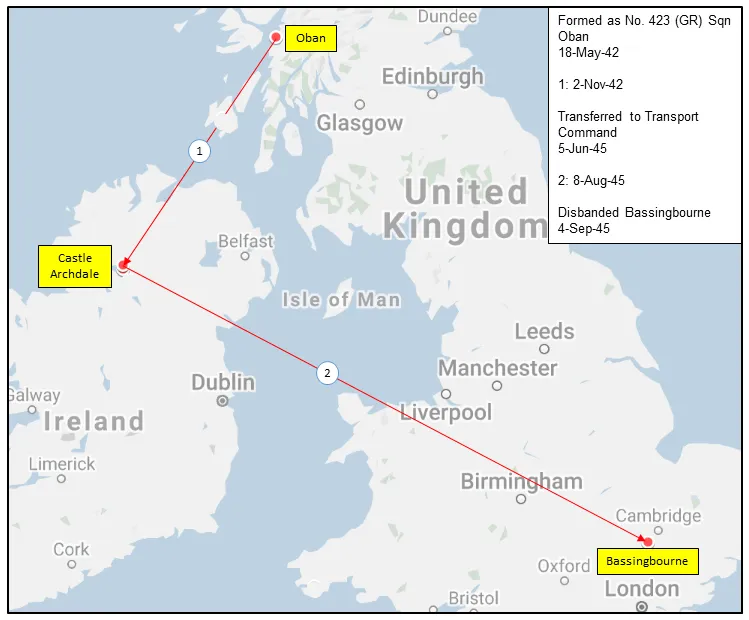Carter, Donald Grove (Flying Officer)
Killed in Flying Accident 1955-April-24


Birth Date: 1926-January-02
Born: Nelson, British Columbia
Thomas Grove & Fannie Maude (nee Robertson) Carter of Penticton, British Columbia.
Home: Nelson, British Columbia
Enlistment:
Enlistment Date: Unknown
Service
RCAF
Unit
423 Sqn- Squadron
Quaerimus Et Petimus We search and strike
Base
Rank
Flying Officer
Position
Flying Officer
Service Numbers
52152
Silver Star serial: 21428

The Canadair CT-133 Silver Star (company model number CL-30) is the Canadian license-built version of the Lockheed T-33 jet trainer aircraft, in service from the 1950s to 2005.
The Canadair CT-133 was the result of a 1951 contract to build T-33 Shooting Star trainers for the Royal Canadian Air Force (RCAF). The powerplant is a Rolls-Royce Nene 10 turbojet instead of the Allison J33 used by Lockheed in the production of the original T-33. A project designation of CL-30 was given by Canadair and the name was changed to Silver Star. The appearance of the CT-133 is very distinctive due to the large fuel tanks usually carried on each wingtip. A total of 656 CT-133 aircraft were built by Canadair.
The CT-133 entered service in the RCAF as its primary training aircraft for fighter/interceptors. The designation of the Silver Star in the Canadian Forces was CT-133.
The CT-133's service life in the RCAF (and later the Canadian Forces) was extremely long. One of the more unusual roles it played was as an aerobatic demonstration aircraft, the RCAF's Red Knight. Although the aircraft stopped being used as a trainer in 1976, there were still over 50 aircraft in Canadian Forces inventory in 1995. The youngest of these airframes was then 37 years old and had exceeded its expected life by a factor of 2.5. During this period, the Canadair T-33 was employed in communication, target towing, and enemy simulation. Wikipedia
Unit Desciption
423 Sqn Quaerimus Et Petimus ()
History of the Squadron during World War II (Aircraft: Sunderland III, Liberator VI, VII)

The squadron was formed as a General Reconnaissance unit at Oban, Scotland , on 18 May 1942. It was the RCAF's 21st, and sixth and last Coastal squadron formed overseas in WWII. The unit flew Short Sunderland flying boats as convoy escorts and on anti-U-boat missions. It remained at Oban until November 1942, when it transferred to Castle Archdale in Northern Ireland .
When hostilities terminated in Europe, the squadron was re-designated as a Transport unit and was slated to move to the Far East as part of the "Tiger Force" that was assembling to carry on the war with Japan. To this end, the squadron was equipped with Consolidated Liberator aircraft, but the termination of hostilities with Japan meant that the squadron was no longer required in the transport role, and it was disbanded at Bassingbourn, Cambridgeshire, England , on September 4, 1945.
The squadron claimed the sinking of a number of U-boats. Flight Lieutenant J. Musgrave and crew shared with destroyers HMCS Drumheller and HMS Lagan the sinking of what was thought to be U-456 on May 12, 1943 (later research established that the U-boat sunk was U-753, see link below). On August 4, 1943, Flying Officer A.A. Bishop and crew sank U-489; on October 8. 1943 Flying Officer A.H. Russell and crew sank U-610; on April 24, 1944 Flying Officer F.G. Fellows and crew sank U-311 (later research showed that the boat attacked was U672, see link below, and that it was damaged but not sunk); on September 11, 1944 it was claimed that Flying Officer J.N. Farren and crew shared in the sinking of U-484 with HMCS Dunver and HMCS Hespeler. Later research showed that this was probably a non-submarine target (see link below). In the course of the war, the squadron won 4 DFCs and 1 DFM. Battle Honours were: Atlantic 1942-45, English Channel and North Sea 1944-45, Normandy 1944, Biscay 1944.Wikipedia, Kostenuk and Griffin, uboat.net
Maps for Movements of 423 Squadron 1942-45

MAP 1: 423 Squadron Movements 1942-45 (right-click on image to display enlarged in new tab)
|

MAP 2: 423 Squadron U-boat sinkings 1943-44
|
423 Squadron History Summary 1942-45

 Nelson, British Columbia
Nelson, British Columbia Canadian Virtual War Memorial
Canadian Virtual War Memorial www.findagrave.com
www.findagrave.com
 Wikipedia Canadair CT-133 Silver Star
Wikipedia Canadair CT-133 Silver Star Harold A Skaarup Web Page
Harold A Skaarup Web Page